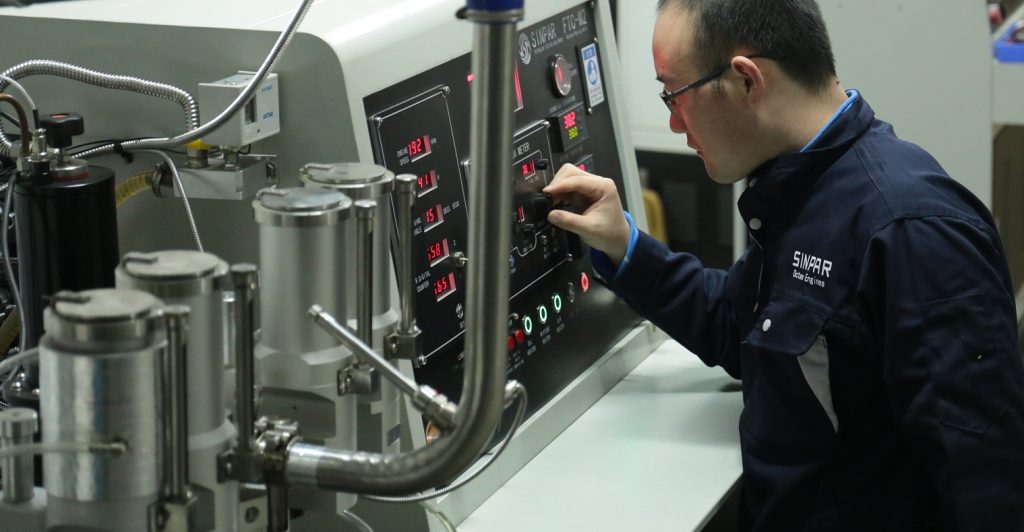Octane number tester is usually used to evaluate the anti-knock performance of fuel. Two methods are generally adopted: motor method and research method. The evaluation is usually carried out on a specially designed single cylinder engine with variable compression ratio and connected to the octane number tester.
The motor method stipulated the test conditions as follows: inlet temperature 149℃, cooling water temperature 100℃, engine speed 900 r/min, ignition advance Angle 14°~26° before TDC. In the test, the measured fuel is used. And the compression ratio gradually changes until the standard knock strength is indicated on the knock meter. Then, with the same compression ratio and other conditions, switch to standard fuel. Standard fuel is a mixture of iso-octane C8H18(rated octane 100) and deflagrative n-heptane (rated octane 0). Gradually change the ratio of isooctane to n-heptane until the deflagration produced by the standard fuel equals that of the fuel tested. The percentage of iso-octane by volume in a standard fuel is the octane number of the fuel being tested. A high octane rating means a fuel has good knock resistance, and vice versa.
For example, a fuel with an octane rating of 80 means that it has the same knock resistance as a mixture containing 80% iso-octane and 20% n-heptane. This is the standard for evaluating the anti-knock properties of fuel.
The research method is the same as the motor method except that the specified test conditions are different. The operating conditions specified in the study method are: inlet temperature is 51.7℃; cooling water temperature is 100℃; engine speed is 600 r/min; ignition advance Angle is 13°.
Because the conditions stipulated by the motor method are stricter than that of the research method, the octane number measured is relatively low. When the octane number measured by the motor method of the same fuel oil is 85, it is equivalent to the octane number of the research method is 92. When the motor method is 90, the research method is 97. Now gas stations use research octane Numbers.
Generally speaking, there are three ways for the factory to improve the octane number of gasoline. First, to choose good raw materials and improve the processing technology. Such as the adoption of catalytic cracking, reforming and other secondary processing technology. The second is to add high octane number ingredients with good anti-knock properties. Such as iso-octane, isopropyl benzene, alkyl benzene, etc. The third is to add antiknock agents.
